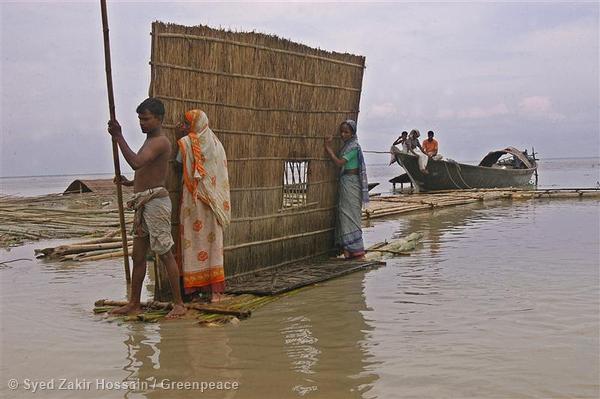South Asian countries – Bangladesh, Bhutan, India, the Maldives, Nepal, Pakistan, Sri Lanka and Afghanistan – adopted the Kathmandu Declaration “to deepen cooperation in core areas of trade, investment, finance, energy, infrastructure and connectivity,” at the South Asian Association of Regional Cooperation (SAARC) summit last week.
SAARC is often dismissed as an irrelevant relic, the combined baggage of member states’ fractious relations often muddying its agenda. This year, the usual politics between India and Pakistan reduced much analysis of the summit to high-pitched gossip about a behind-the-lines meeting of the Indian and Pakistani prime ministers. Even though the prime minister of Nepal and summit chairman acknowledged the “shortcomings in the SAARC process”, the summit did produce one tangible result: the last-minute signing of an agreement for energy cooperation, a move aimed to facilitate the integration of the regional energy grid.
From an environmental point of view, SAARC remains an institution of great potential for multilateral environmental diplomacy. Although India’s long-standing insistence on bilateralism in diplomacy has knocked the wind out of a grand regional approach, increased exploitation of natural resources in the region coupled with climate change challenges has brought environmental concerns onto the SAARC agenda. Climate change was the theme of the 2010 SAARC summit held in Bhutan, and the organisation has established a number of institutions to report on climate change, forestry, coastal zone management and disaster risk management.
These changing ground realities impact SAARC’s focus on poverty alleviation and economic development. Rapid environment degradation has led experts to conclude that multilateral diplomacy is now essential for the ecological sustainable development of South Asia, as scholar Saleem H. Ali wrote in a paper for the New America Foundation. Ali argues environment concerns can be used for regional peace-building and to achieve broader objectives in the region.
Another decision taken at the recent summit points to the potential relevance of SAARC as a tool for environmental diplomacy. The Declaration calls for the merger of four different SAARC regional institutions, namely the Coastal Zone Management Centre, Meteorological Research Centre, Forestry Centre and Disaster Management Centre and for the creation of a new SAARC Environment and Disaster Management Centre in one place.
South Asia’s vulnerability to climate change is well known. Sea-level rise, increased floods and droughts threaten not only food and water security but land-mass as well. Bangladesh and the Maldives will be hit hard by sea-level rise. In north India as well as Pakistan, there have been repeated Monsoon floods in the past five years.
Regional level monitoring of climate events and sharing of reliable data by a centralised SAARC centre is not only crucial for adaptation purposes, but also for SAARC diplomacy.
A recent survey of attitudes to water in South Asia, published by Chatham House, found there is very little reliable or accurate information about transboundary waters in South Asia. However the research and interviews indicated that greater access to information “would serve to ease transboundary water tensions and could facilitate improved domestic water management.”
If the new SAARC Environment and Disaster Management Centre could act as a clearing-house for reliable water data from member states, it would herald a new era in South Asia transboundary water relations.
In a recent policy paper I co-wrote with Sanjay Upadhyay, we argue that shared environment concerns can encourage broader political engagement. For example, countries like India and Pakistan, whose bilateral diplomacy appears to be frozen due to security issues such as terrorism and Kashmir, can find an opportunity in greenfield policy areas such as groundwater. Groundwater is not regulated by the Indus Waters Treaty – which otherwise defines and surface water sharing arrangement between the two countries of the tributaries of the Indus river – and thus allows an opportunity to discuss water issues outside the heated discourse on the Treaty.
So while the Indus Treaty regulates India’s ability to develop hydropower on the Eastern Rivers of the Indus Basin, a discussion on groundwater will raise issues of water and food security, of farmer livelihoods and rural development policies.
It is in these areas that all SAARC countries face similar challenges and it appears intuitive that the SAARC agenda seek to pursue diplomacy on the foundation of these strong shared concerns.
At present, however, the opportunities for multilateral environmental diplomacy at the SAARC level remain bleak. Political interests lie elsewhere in South Asia. As long as the status quo remains unchanged – with leaders unable to recognise the potential of shared environment concerns in driving the diplomatic process – the people and ecosystems of South Asia remain vulnerable to their climate and will remain unable benefit from the promise of joint economic development.
